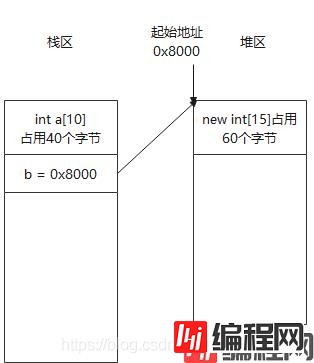上节我们讲了c++程序的内存分布。C++程序的内存分布 本节来介绍为什么要进行内存分配。 按需分配,根据需要分配内存,不浪费。 内存拷贝函数void* memcpy(void* de
上节我们讲了c++程序的内存分布。C++程序的内存分布
本节来介绍为什么要进行内存分配。
按需分配,根据需要分配内存,不浪费。
内存拷贝函数void* memcpy(void* dest, const void* src, size_t n);
从源src中拷贝n字节的内存到dest中。需要包含头文件#include <string.h>
#include <stdio.h>
#include <string.h>
using namespace std;
int main() {
int a[10] = { 1, 2, 3, 4, 5, 6, 7, 8, 9, 10 };
int* b;
b = new int[15];
//从a拷贝10 * 4字节的内存到b
memcpy_s(b, sizeof(int) * 10, a, sizeof(int) * 10);
//进行赋值
for(int i = sizeof(a) / sizeof(a[0]); i < 15; i++){
*(b + i) = 15;
}
for (int i = 0; i < 15; i++) {
printf("%d ", b[i]);
}
return 0;
}输出结果:
1 2 3 4 5 6 7 8 9 10 15 15 15 15 15

被调用函数之外需要使用被调用函数内部的指针对应的地址空间
#include <stdio.h>
#include <stdlib.h>
#include <string.h>
using namespace std;
//定义一个指针函数
void* test() {
void* a;
//分配100*4个字节给a指针
//mallocC语言的动态分配函数
a = malloc(sizeof(int) * 100);
if (!a) {
printf("内存分配失败!");
return NULL;
}
for (int i = 0; i < 100; i++)
{
*((int*)a + i) = i;
}
return a;
}
int main() {
//test()返回void*的内存,需要强转换
int* a = (int*)test();
//打印前20个
for (int i = 0; i < 20; i++) {
printf("%d ", a[i]);
}
//C语言的释放内存方法
free(a);
return 0;
}输出结果:
0 1 2 3 4 5 6 7 8 9 10 11 12 13 14 15 16 17 18 19
此处在main函数中使用了在test()函数中分配的动态内存重点地址。
也可以通过二级指针来保存,内存空间:
#include <stdio.h>
#include <stdlib.h>
#include <string.h>
using namespace std;
//定义一个指针函数
void test(int **a) {
*a = (int*)malloc(sizeof(int) * 100);
if (!*a) {
printf("内存分配失败!");
exit(0);
}
for (int i = 0; i < 100; i++)
{
*(*a + i) = i;
}
}
int main() {
//test()返回void*的内存,需要强转换
int* a;
test(&a);
//打印前20个
for (int i = 0; i < 20; i++) {
printf("%d ", a[i]);
}
free(a);
return 0;
}突破栈区的限制,可以给程序分配更多的空间。
栈区的大小有限,在windows系统下,栈区的大小一般为1~2Mb
#include <stdio.h>
#include <stdlib.h>
#include <string.h>
using namespace std;
void test() {
//分配一个特别大的数组
int a[102400 * 3];// 100k * 3 * 4 = 1200K
a[0] = 0;
}
int main() {
test();
return 0;
}点运行会出现Stack overflow的提示(栈区溢出!)。
修改:
#include <stdio.h>
#include <stdlib.h>
#include <string.h>
using namespace std;
void test() {
//在堆中分配一个特别大的数组1G
//在Windows 10 系统限制的堆为2G
int* a = (int*)malloc(1024 * 1000 * 1000 * 1); //1G
a[0] = 0;
}
int main() {
test();
return 0;
}成功运行!但是当分配两个G的动态内存时,就会报错,这个时候分配失败,a = NULL;
1、按需分配,根据需要分配内存,不浪费。
2、被调用函数之外需要使用被调用函数内部的指针对应的地址空间。
3、突破栈区的限制,可以给程序分配更多的空间。
本节介绍了为什么使用动态内存分配,下节我们介绍动态内存的分配、使用、释放。
到此这篇关于C++使用动态内存分配的原因解说的文章就介绍到这了,更多相关C++使用动态内存分配内容请搜索编程网以前的文章或继续浏览下面的相关文章希望大家以后多多支持编程网!
--结束END--
本文标题: C++使用动态内存分配的原因解说
本文链接: https://lsjlt.com/news/124839.html(转载时请注明来源链接)
有问题或投稿请发送至: 邮箱/279061341@qq.com QQ/279061341
2024-03-01
2024-03-01
2024-02-29
2024-02-29
2024-02-29
2024-02-29
2024-02-29
2024-02-29
2024-02-29
2024-02-29
回答
回答
回答
回答
回答
回答
回答
回答
回答
回答
0